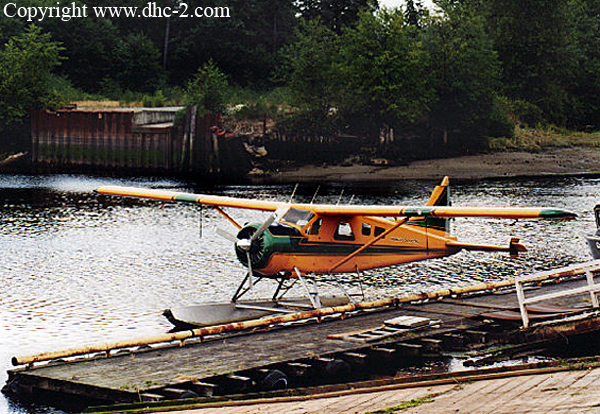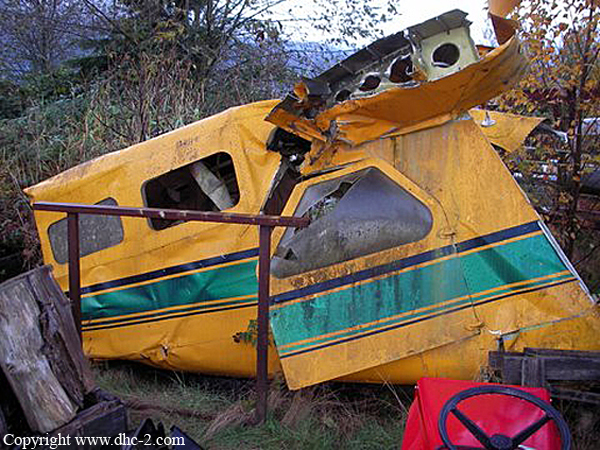Country
Crash of a De Havilland DHC-2 Beaver off Whitsunday Island
Date & Time:
Mar 6, 2003 at 1615 LT
Registration:
VH-AQV
Survivors:
Yes
Schedule:
Hamilton Island - Whitsunday Island
MSN:
1257
YOM:
1958
Crew on board:
1
Crew fatalities:
Pax on board:
0
Pax fatalities:
Other fatalities:
Total fatalities:
0
Captain / Total hours on type:
50.00
Circumstances:
The pilot was conducting a charter positioning flight from Hamilton Island Marina to Whitehaven Beach, Whitsunday Island. At approximately 1615LT, pilot was landing the aircraft towards the south, about 600 metres off the beach, to avoid mechanical turbulence associated with terrain at the southern end of Whitehaven Beach. He reported that the approach and flare were normal, however, as the aircraft touched down on the right float, the aircraft swung sharply right and then sharply left. The left wing contacted the water, and the aircraft overturned. The pilot exited the upturned aircraft through the left rear passenger door and activated a 121.5 MHz distress beacon.
Probable cause:
The wind strength and sea state at the time of the occurrence were not ideal for floatplane operations, particularly given the pilot's relative lack of experience in open water operations. In comparison, it was unlikely the non-standard floats contributed significantly to the development of the accident. The loss of directional control suggests a lower than ideal pitch attitude at touchdown, a configuration which reduces a floatplane's directional stability. The pilot's use of a distress beacon for search and rescue purposes was appropriate, however the timeliness of his rescue from the upturned aircraft can be attributed to the effectiveness of the company's flight monitoring system and subsequent search and rescue actions.
Final Report:
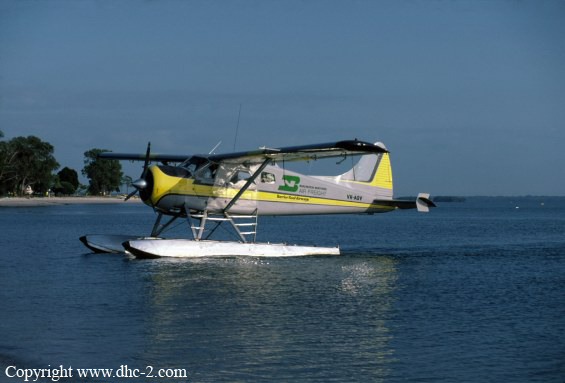
Crash of a De Havilland DHC-2 Beaver near Aleknagik: 1 killed
Date & Time:
Aug 28, 2002 at 1600 LT
Registration:
N4478
Survivors:
Yes
Schedule:
Dillingham - Lake Nerka
MSN:
1653
YOM:
1966
Crew on board:
1
Crew fatalities:
Pax on board:
2
Pax fatalities:
Other fatalities:
Total fatalities:
1
Captain / Total hours on type:
200.00
Aircraft flight hours:
8847
Circumstances:
The amphibious float-equipped airplane was returning to a lodge located on a remote lake after picking up supplies. The airplane departed from a paved runway on an airport. En route to the destination lake, the pilot noted the airplane would not attain its normal cruise airspeed and attitude. Believing the airplane was tail heavy, the pilot asked the aft cabin passenger to move forward. Upon touchdown on the lake, the airplane nosed down into the water. As the airplane nosed down, the supplies, which were not secured in the aft cabin, came forward, and pinned the pilot and front seat passenger against the instrument panel. The passenger in the aft cabin lifted as many of the supplies off the pilot and front seat passenger as he could, before he had to exit the sinking airplane. Both the pilot and front seat passenger exited the submerged airplane under their own power, but the pilot did not reach the surface. An autopsy of the pilot disclosed that he had drowned. A postaccident inspection of the airplane revealed the wheels had not been retracted after takeoff on the runway, consequently the airplane landed on the lake with the wheels fully extended. The front seat passenger said that the pilot did not use a checklist prior to landing.
Probable cause:
The pilot's failure to use a checklist to ensure the airplane was in the proper landing configuration, which precipitated an inadvertent water landing on amphibious floats with the wheels extended. A factor contributing to the accident was the pilot's failure to secure the cargo in the aft cabin.
Final Report:

Crash of a De Havilland DHC-2 Beaver in Kasshabog Lake: 1 killed
Date & Time:
Aug 24, 2002 at 1308 LT
Registration:
C-GUNE
Survivors:
Yes
Schedule:
Holinshead Lake - Kasshabog Lake
MSN:
1403
YOM:
1959
Crew on board:
1
Crew fatalities:
Pax on board:
4
Pax fatalities:
Other fatalities:
Total fatalities:
1
Circumstances:
The aircraft was en route from Holinshead Lake to Kasshabog Lake when the pilot encountered deteriorating weather conditions. As the flight progressed, the ceiling became increasingly lower until it was nearly at tree top level. Shortly thereafter, the pilot located a cabin at the destination outpost camp. On final approach to the camp, the aircraft struck the water while in a turn, tearing off one float and it eventually sank. The pilot and four passengers exited the aircraft and attempted to swim ashore. While swimming, one of the passengers went missing and was not located. Ontario Provincial Police divers were dispatched to search for the missing passenger. Three people were slightly injured and one seriously.


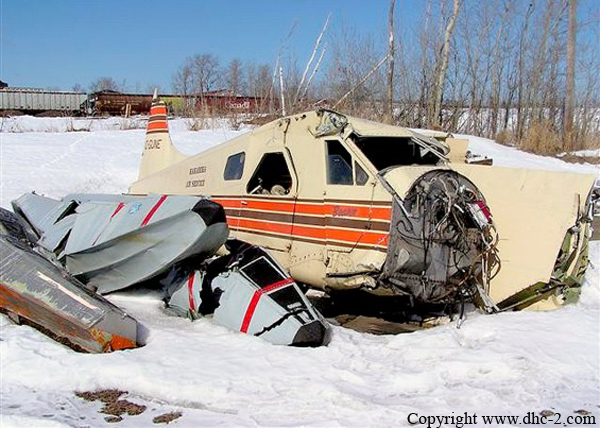
Crash of a De Havilland DHC-2 Beaver near Port Alsworth: 4 killed
Date & Time:
Jul 12, 2002 at 1145 LT
Registration:
N3129F
Survivors:
No
Schedule:
Anchorage - Iliamna
MSN:
903
YOM:
1956
Crew on board:
1
Crew fatalities:
Pax on board:
3
Pax fatalities:
Other fatalities:
Total fatalities:
4
Captain / Total hours on type:
258.00
Aircraft flight hours:
12698
Circumstances:
The commercial pilot of the float-equipped airplane was transporting passengers to a lodge at a remote lake. When the airplane did not arrive at the lake, a search was initiated, and two days later the wreckage of the airplane was located on the side of a box canyon about the 2,400 foot elevation level. The canyon is oriented approximately east-west, and the wreckage was distributed along a 100 foot debris field on the north flank of the canyon. Ground scars and wreckage distribution were consistent with the airplane impacting terrain in a steep left bank while executing a turn to reverse direction. No evidence of any preimpact mechanical anomalies was discovered.
Probable cause:
The pilot's failure to maintain clearance from terrain while maneuvering inside a box/blind canyon, resulting in an in-flight collision with terrain. A factor contributing to the accident was the box/blind canyon.
Final Report:
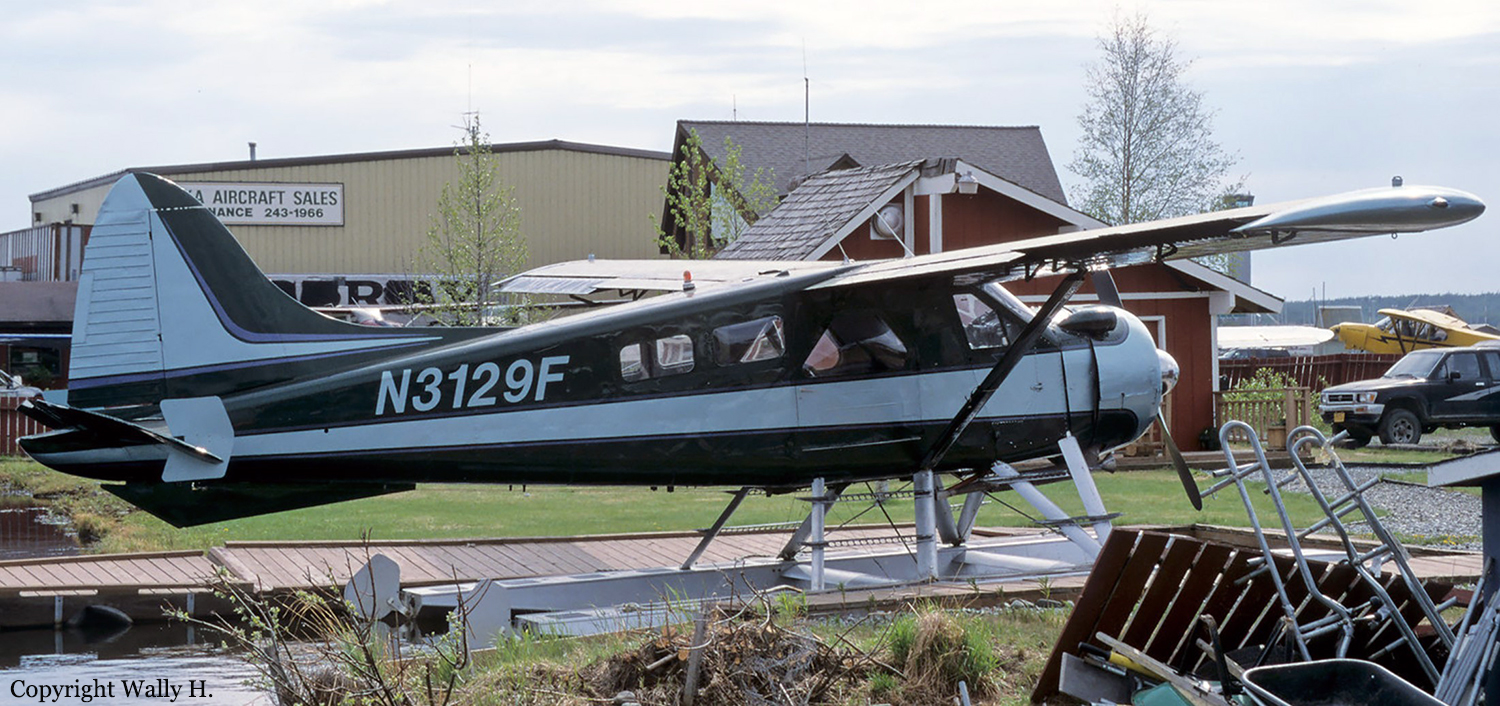
Crash of a De Havilland DHC-2 Beaver in Mollet Lake: 3 killed
Date & Time:
Oct 8, 2001 at 1730 LT
Registration:
C-GPUO
Survivors:
Yes
Schedule:
Iyachisakus Lake - Mollet Lake
MSN:
810
YOM:
1955
Crew on board:
1
Crew fatalities:
Pax on board:
6
Pax fatalities:
Other fatalities:
Total fatalities:
3
Aircraft flight hours:
13140
Circumstances:
The float-equipped Beaver de Havilland DHC-2 Mk 1, registration C-GPUO, serial number 810, took off at 1710 eastern daylight time from Iyachisakus Lake, Quebec, with the pilot and six passengers on board, for a visual flight rules flight to an outfitter on Mollet Lake, 26 nautical miles (nm) to the east. At about 1730, a witness at the outfitter heard the seaplane flying on an easterly heading to the south of the lake. About 20 minutes later, noting that the aircraft had not arrived at the dock, the manager of the outfitter sent a boat to look for C-GPUO. The Beaver was found 1 nm east of the outfitter. It was lying partly submerged in Mollet Lake near the north shore, with the nose in the water and leaning backward. Four injured occupants who were clinging to the fuselage were rescued. The pilot and two of the passengers were fatally injured.
Probable cause:
Findings as to Causes and Contributing Factors:
1. The seaplane stalled at an altitude that did not allow the pilot time to recover from the stall.
2. The stall occurred in circumstances conducive to illusions created by drift.
Findings as to Risks:
1. The aircraft was not equipped with a stall warning device, which could have alerted the pilot to the onset of a stall.
2. The chances of surviving the impact would have been improved if the front seat occupants had been wearing their shoulder harnesses as prescribed by aviation regulations.
3. Life jackets were available, but the occupants who evacuated the aircraft do not seem to have had time to find, retrieve, and don them.
4. The emergency locator transmitter was not capable of emitting a distress signal because a short circuit occurred when the antenna came into contact with the water.
1. The seaplane stalled at an altitude that did not allow the pilot time to recover from the stall.
2. The stall occurred in circumstances conducive to illusions created by drift.
Findings as to Risks:
1. The aircraft was not equipped with a stall warning device, which could have alerted the pilot to the onset of a stall.
2. The chances of surviving the impact would have been improved if the front seat occupants had been wearing their shoulder harnesses as prescribed by aviation regulations.
3. Life jackets were available, but the occupants who evacuated the aircraft do not seem to have had time to find, retrieve, and don them.
4. The emergency locator transmitter was not capable of emitting a distress signal because a short circuit occurred when the antenna came into contact with the water.
Final Report:
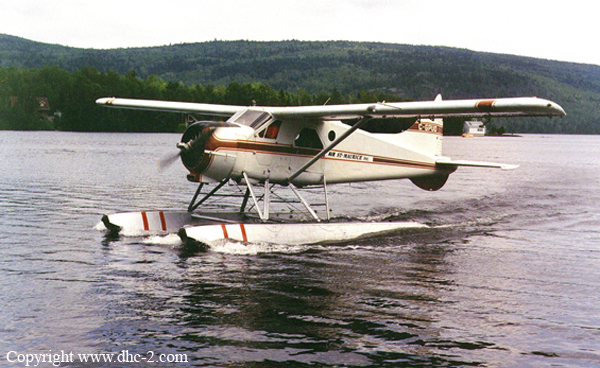
Crash of a De Havilland DHC-2 Beaver near Mackenzie Lake: 5 killed
Date & Time:
Aug 13, 2001 at 1706 LT
Registration:
C-GVHT
Survivors:
No
Schedule:
Campbell River - Mackenzie Sound
MSN:
257
YOM:
1952
Crew on board:
1
Crew fatalities:
Pax on board:
4
Pax fatalities:
Other fatalities:
Total fatalities:
5
Aircraft flight hours:
11325
Circumstances:
A de Havilland DHC-2 Beaver floatplane, C-GVHT (serial number 257), took off from Campbell River, British Columbia, at 1530 Pacific daylight time, with a pilot and four passengers on board. The aircraft was on a visual flight rules flight to a logging camp on Mackenzie Sound, 76 nautical miles northwest of Campbell River, and was scheduled to arrive at 1700. When the aircraft arrived over the Mackenzie logging camp, the pilot informed ground personnel by radio that he was overhead at 2800 feet, between cloud layers with no place to descend, and that because of unfavourable weather conditions, he was returning, presumably to Campbell River. The aircraft then flew to a clear area north of the camp and entered the Frederic Creek valley. When company ground personnel could not contact the aircraft by radio, they began a ground search, later followed by an aerial search. The searches were hampered by poor weather. The aircraft wreckage was found three days later, about four nautical miles northeast of the camp. The accident occurred at 1706 in daylight conditions. All occupants were fatally injured, and the aircraft was destroyed. The emergency locator transmitter was destroyed on impact and did not transmit a signal. No fire occurred.
Probable cause:
Findings as to Causes and Contributing Factors:
1. The pilot abandoned his attempt to fly through the pass because of unsuitable weather conditions. He flew into a confined area that required him to manoeuvre the aircraft aggressively to avoid the rising terrain, causing the aircraft to stall.
2. The aircraft weight exceeded the certificated MAUW, and the CG was outside the floatplane aft limit. The out-of-limit weight and balance aggravated aerodynamic stall and produced rapid and
uncontrolled aircraft attitudes from which the pilot could not recover before striking the trees.
3. Basic weight and balance of the aircraft was incorrectly recorded in several aircraft documents, leading to remarkable discrepancies in take-off weight and CG calculations. As a result, a pilot could not calculate an accurate weight and balance. In certain conditions, calculations erroneously showed that the aircraft was below maximum allowable gross weight.
Findings as to Risk:
1. The practice of using a non-standard passenger weight led to inaccurate take-off weight calculations and provided an estimated total passenger weight that was 185 pounds less than actual.
2. Weight and balance calculations performed using inaccurate figures would not have revealed that the aircraft was overloaded until it was approximately 450 pounds beyond the maximum limit.
3. Aircraft weight exceeded the maximum allowable gross weight, and the CG was outside the aft CG limit. This weight and balance combination placed the aircraft outside the manufacturer’s
original design envelope, to where slow speed and stall handling characteristics are neither proven nor certificated.
4. Cargo was not secured by the available cargo restraint and might have shifted during aircraft manoeuvring. Such cargo movement would have exacerbated the effects of the existing aft CG and likely increased the level of injury to the occupants.
Other Findings:
1. The pilot chose to fly above cloud in accordance with the visual flight rules and could not descend through the cloud at his intended landing site.
2. The Alaska cargo door installation increases the volume of the cargo compartment. The installation is thereby conducive to larger loads being stowed farther aft and possible overloading of the cargo compartment.
3. The DHC-2 Beaver is not equipped with an aural or visual stall warning system, nor is it required by regulation. Warning of an impending stall is dependent on juddering or some other aerodynamic indication.
1. The pilot abandoned his attempt to fly through the pass because of unsuitable weather conditions. He flew into a confined area that required him to manoeuvre the aircraft aggressively to avoid the rising terrain, causing the aircraft to stall.
2. The aircraft weight exceeded the certificated MAUW, and the CG was outside the floatplane aft limit. The out-of-limit weight and balance aggravated aerodynamic stall and produced rapid and
uncontrolled aircraft attitudes from which the pilot could not recover before striking the trees.
3. Basic weight and balance of the aircraft was incorrectly recorded in several aircraft documents, leading to remarkable discrepancies in take-off weight and CG calculations. As a result, a pilot could not calculate an accurate weight and balance. In certain conditions, calculations erroneously showed that the aircraft was below maximum allowable gross weight.
Findings as to Risk:
1. The practice of using a non-standard passenger weight led to inaccurate take-off weight calculations and provided an estimated total passenger weight that was 185 pounds less than actual.
2. Weight and balance calculations performed using inaccurate figures would not have revealed that the aircraft was overloaded until it was approximately 450 pounds beyond the maximum limit.
3. Aircraft weight exceeded the maximum allowable gross weight, and the CG was outside the aft CG limit. This weight and balance combination placed the aircraft outside the manufacturer’s
original design envelope, to where slow speed and stall handling characteristics are neither proven nor certificated.
4. Cargo was not secured by the available cargo restraint and might have shifted during aircraft manoeuvring. Such cargo movement would have exacerbated the effects of the existing aft CG and likely increased the level of injury to the occupants.
Other Findings:
1. The pilot chose to fly above cloud in accordance with the visual flight rules and could not descend through the cloud at his intended landing site.
2. The Alaska cargo door installation increases the volume of the cargo compartment. The installation is thereby conducive to larger loads being stowed farther aft and possible overloading of the cargo compartment.
3. The DHC-2 Beaver is not equipped with an aural or visual stall warning system, nor is it required by regulation. Warning of an impending stall is dependent on juddering or some other aerodynamic indication.
Final Report:
